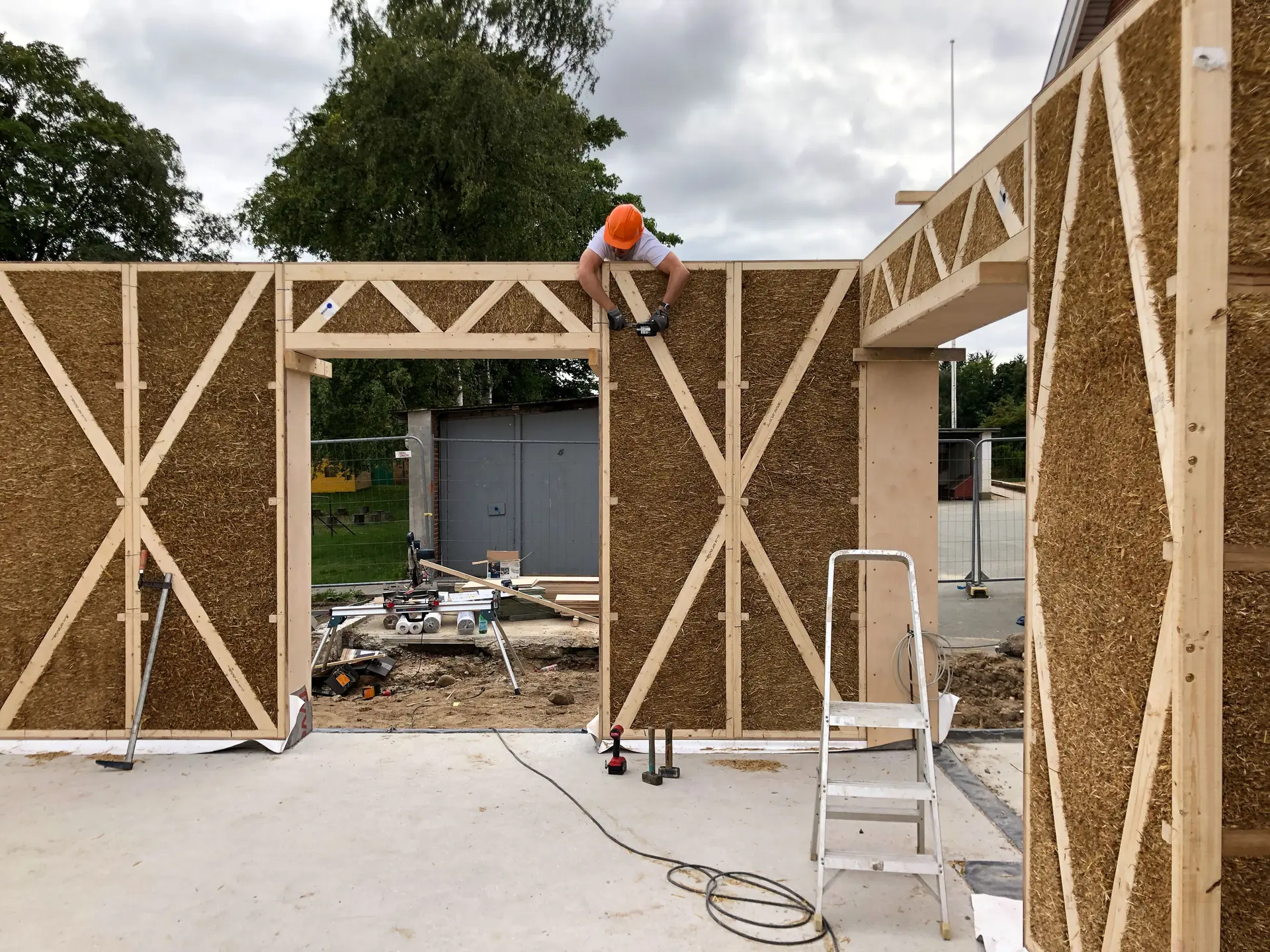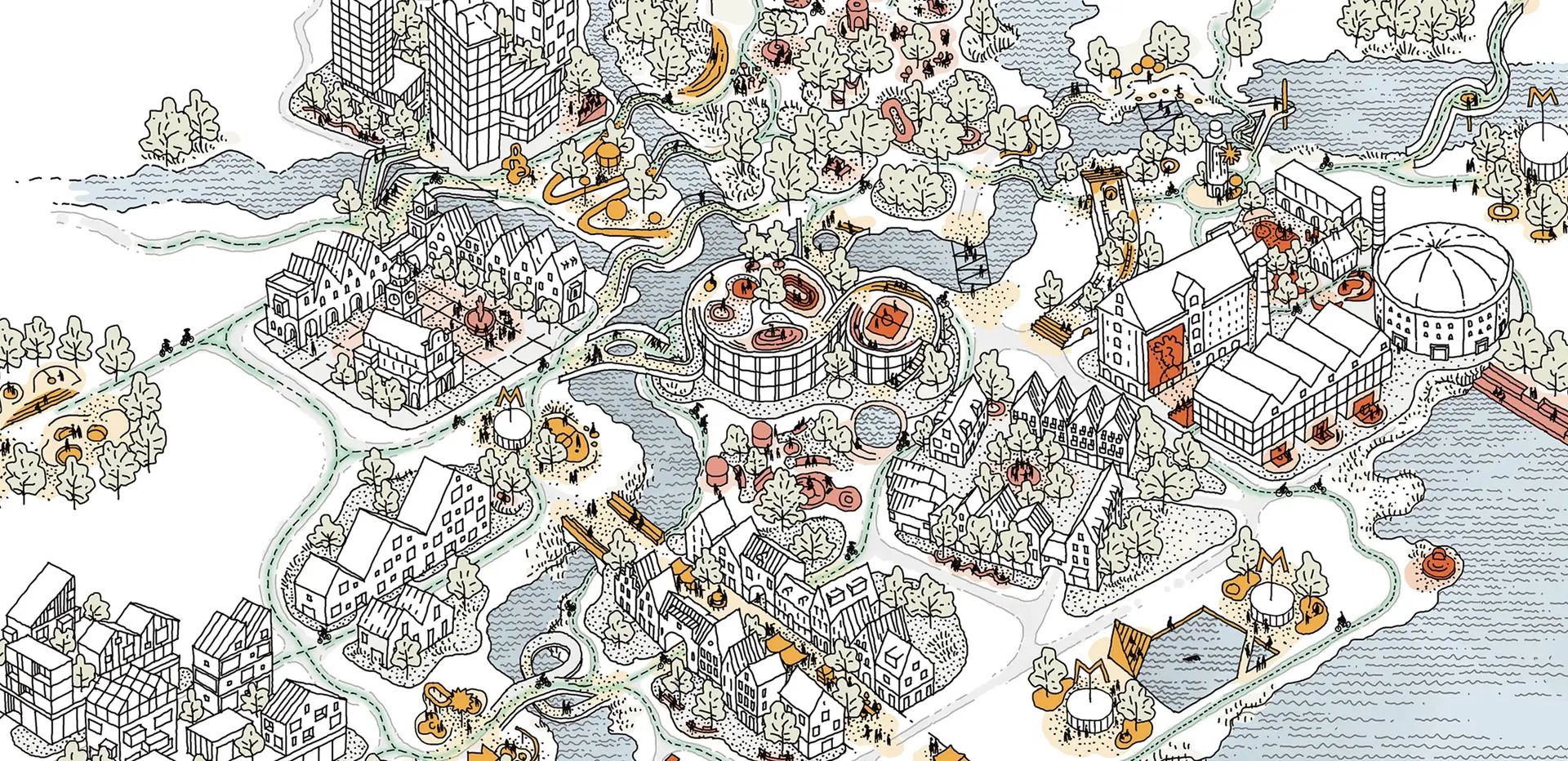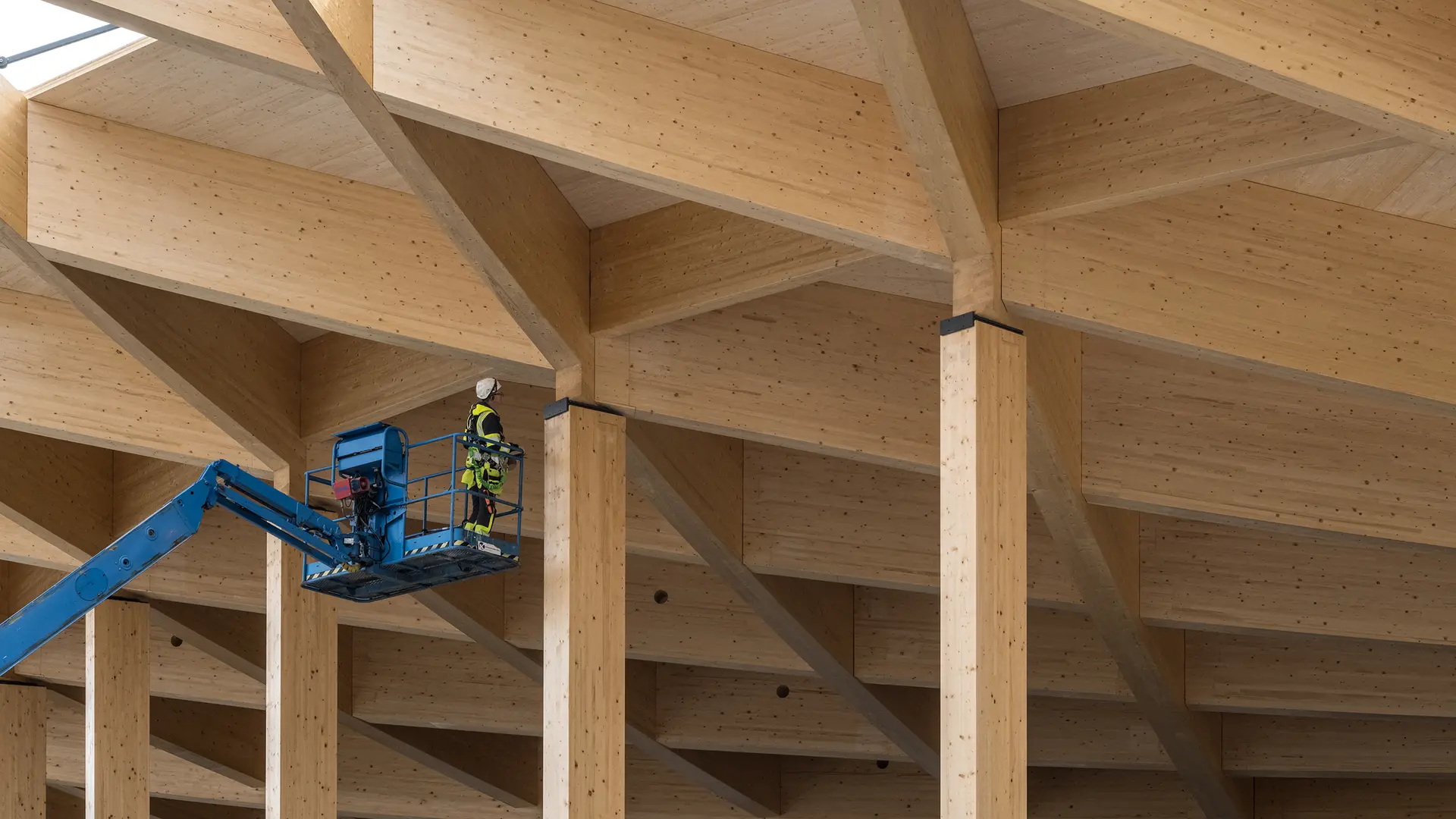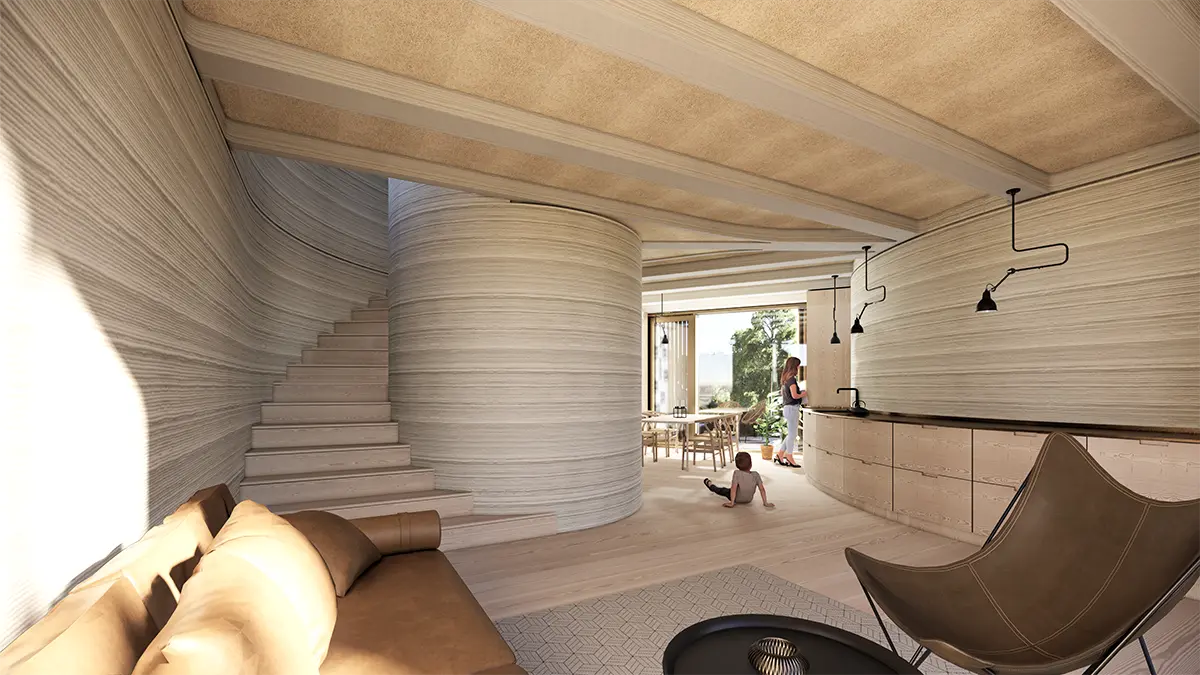To create a sustainable and healthy learning environment, we've tuned in to straw construction

In a school extension that will house science classes, the potential of straw bale construction becomes the first lesson.
Our design for an extension for the Feldballe Friskole in eastern Jutland was made to support the school’s goal of preparing a future generation of thinkers, leaders, and community members committed to creating a more sustainable world. To this end, we have created a carbon negative building using straw bale construction, a construction technique that uses tightly compressed organic materials into wooden cassettes. With a focus on sustainable building materials, the Feldballe extension makes a healthy environment a central tenant of the school’s educational program. By prioritizing the use of sustainable construction techniques and untreated building materials, the school’s design contributes to the bright future of its students and a sustainable future for the planet.
The House That Straw Built
Much like mass timber construction, contemporary straw bale construction looks to a timeless building practice to inform a new way of building. Importing this historic construction material into contemporary manufacturing processes has significantly scaled up the possibilities for building with straw. Today, manufacturers like EcoCocon make prefabricated straw panels that arrive on-site ready for installation, making the construction process unbeatably fast.
Once constructed, the airtight straw layer is not only extremely long lasting—with a centuries long lifespan with proper installation—but surprisingly fire resistant. The straw is packed so densely that, without oxygen to feed the fire, it can withstand over two hours of 1050°C flames according to EcoCocon’s fire tests. In comparison, a standard fire safety tests aims for 30 minutes of fire resistance. The dense straw insulation is tight enough to keep warm air in yet permeable enough for humidity to escape, creating a healthy and comfortable indoor climate without reliance on heating systems.
Scaling-Up on Straw
Much like wood, straw sequesters carbon, retains it for the lifespan of the building, and can be safely broken down back into nature. Feldballe’s material palette relies heavily on natural materials such as untreated spruce to reduce chemical exposure and ensure a facade that ages gracefully. Straw is an organic waste product naturally produced during wheat production that is already readily available in many places, making it an ideal material to be used across the construction sector and in the global transition to a more sustainable industry.



